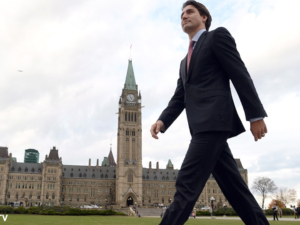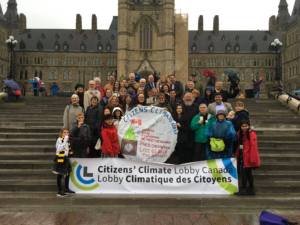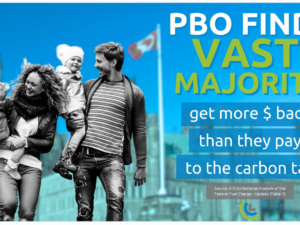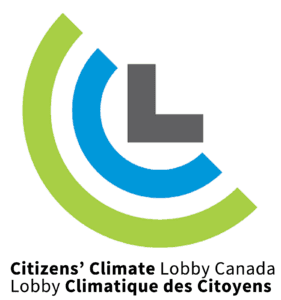Laser Talk: Canada’s Carbon Pricing Policy
In June 2018, the Greenhouse Gas Pollution Pricing Act achieved Royal Assent and became law of the land in Canada. Under the regulation, all provinces and territories must have had a carbon pricing policy of at least $20 per tonne by April 1, 2019, raising $10 per tonne each year until 2022, with the flexibility to have their own carbon pricing systems which are equally stringent as the Federal Backstop Carbon Pricing system. In 2021, the federal government updated its policy on recognizing the stringency of provincial carbon pricing systems and the price began rising incrementally $15 per tonne each year starting in 2022 to $170 tonne by 2030. In jurisdictions that do not have equivalent carbon pricing policies, the Federal Backstop Carbon Pricing system will apply.
There are two elements of the Federal Backstop Carbon Pricing system:
-
- THE FUEL CHARGE: A charge on fossil fuels that is generally payable by fuel producers or distributors, with rates for each fuel that are equivalent to $10 per tonne of carbon dioxide equivalent (CO2e) in 2018, rising by $10 per year to $170 per tonne CO2e in 2030. The carbon fee for the federal backstop policy is revenue-neutral. Between 2019 and 2021 the revenue was recycled back to the citizens in their income taxes under line 449 “climate action incentive“. In provinces where the federal backstop Fuel Charge applies (Alberta, Manitoba, Newfoundland and Labrador, New Brunswick, Nova Scotia, Ontario, Prince Edward Island, and Saskatchewan), households receive quarterly deposits in their bank accounts or quarterly cheques. On February 14, 2024 the name of the refund was changed to the Canada Carbon Rebate. Canadians living in a province with the rebate can use the interactive tool at the bottom of this article to calculate their monthly rebate, as well as estimate monthly carbon tax costs.
- OUTPUT-BASED CARBON PRICING (OBPS): For businesses and industries that qualify, they are enrolled in
an Output-Based Carbon Pricing System. They pay a carbon price based on their emissions’ intensity relative to the best in the class of their industry, and surplus credits are traded. This component of the act protects emissions-intensive trade-exposed industries from trade pressures and carbon leakage. However, it does not send a strong enough signal to transform Canada’s energy systems to carbon decarbonize in alignment with the realities of the climate emergency we face. This assertion is supported by research by Clean Prosperity and the Parliamentary Budget Office. Citizens Climate Lobby Canada recommends that the carbon price should be economy-wide and thus the Output-Based Pricing System should be temporary, and ultimately replaced with Carbon Border Adjustment Mechanisms .
On February 14, 2024 were 3 major updates in Canada’s climate policy – the first two changes we lobbied for:
- The Climate Action Incentive Payment was renamed the Canada Carbon Rebate (and is a lesson to all to think deeply about the name of the rebate).
- The federal government is encouraging financial institutions to consistently label the Canada Carbon Rebate direct deposits that Canadians receive in their bank accounts every three months because most banks don’t clearly label the deposit (which partially accounts for why most Canadians don’t know they receive a rebate).
- The federal government is proposing, through legislative amendments in Bill C-59, to double the rural top-up to 20 per cent, in recognition of rural Canadians’ higher energy needs and more limited access to cleaner transportation options. (We are supportive of ongoing analysis of the distributional impacts of climate policies and refinements to the Greenhouse Gas Pollution Pricing Act).
GOVERNMENT WEBSITES
- https://www.canada.ca/en/department-finance/news/2024/02/government-announces-canada-carbon-rebate-amounts-for-2024-25.html
- https://www.pm.gc.ca/en/news/news-releases/2023/10/26/delivering-support-for-canadians-on-energy-bills
- http://www.parl.ca/DocumentViewer/en/42-1/bill/C-74/royal-assent
- https://www.canada.ca/en/revenue-agency/campaigns/cai-payment.html
- https://www.canada.ca/en/revenue-agency/services/tax/individuals/topics/about-your-tax-return/tax-return/completing-a-tax-return/deductions-credits-expenses/line-449-climate-action-incentive.html
- https://www.pbo-dpb.gc.ca/web/default/files/Documents/Reports/2019/Federal%20Carbon/Federal_carbon_pricing_EN.pdf
- https://www.canada.ca/en/services/environment/weather/climatechange/climate-action/pricing-carbon-pollution.html
OTHER REFERENCES
- CBC News. (2024, Jan 15). Carbon tax rebate perceptions: Believe it or not. https://www.cbc.ca/news/canada/calgary/carbon-tax-rebate-perceptions-believe-it-or-not-1.7079782?__vfz=medium%3Dsharebar
- Global News. (2023, April 1). Carbon tax to increase on April 1, 2023. https://globalnews.ca/news/9591715/carbon-tax-increase-april-1-2023/
- CTV News. (2023 Nov 1). Carbon pricing in Canada: What it is, what it costs, and why you get a rebate. https://www.ctvnews.ca/politics/carbon-pricing-in-canada-what-it-is-what-it-costs-and-why-you-get-a-rebate-1.6627245#:~:text=It%20started%20at%20%2420%20for,has%20a%20different%20carbon%20footprint.
- Angus Reid Institute. Carbon Tax Perceptions & Rebates. (2023, Nov.16) https://angusreid.org/carbon-tax-perceptions-rebates/













